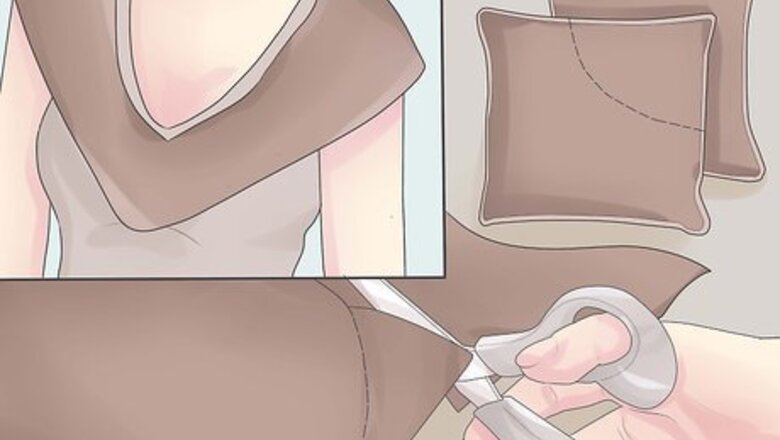
views
Making a Native American Indian Tunic

Cut a neckline from a tan or brown pillowcase. Use scissors to cut out a half-moon shape from the folded bottom of a pillowcase. The cut should be large enough to fit the intended wearer's head through. Lay the pillowcase flat and trace the desired shape with a pencil before cutting. Center the half-moon along the edge. For a young child, the half-moon should be about 6 inches (15 cm) long by 3 inches (7.5 cm) tall. For an adult or older child, measure the width of the wearer's neck to determine how long the neckline needs to be. You can use a flat, round object, such as a plate, to trace the half-moon or half-circle. Ask the intended wearer to slip the pillowcase on over his or her head. If the wearer's head cannot fit through the neckline, make it a little larger and try again. If you want to save time, use a tan or brown t-shirt instead of a pillowcase. This will save you the effort of creating necklines and armholes, but you will need to cut the sleeves off of the shirt before proceeding.
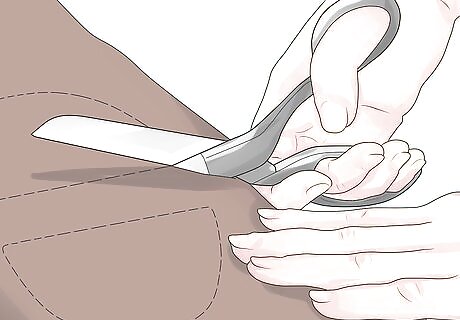
Create armholes. Cut two more half-moon shapes along both sides of your pillowcase, near the folded top of the material. Make sure that the holes are large enough for the intended wearer to fit his or her arms through. The armholes should be evenly positioned and approximately 1 to 2 inches (2.5 to 5 cm) down from the top of the pillowcase. For a young child, the half-moon shapes should be about 3 inches (7.5 cm) long and 1/2-inch (1.25-cm) wide. For an adult or older child, measure the thickest part of the upper arm to determine how long the hole needs to be. Instruct the intended wearer to slip the pillowcase on. If his or her arms do not fit through the holes, make the holes bigger.
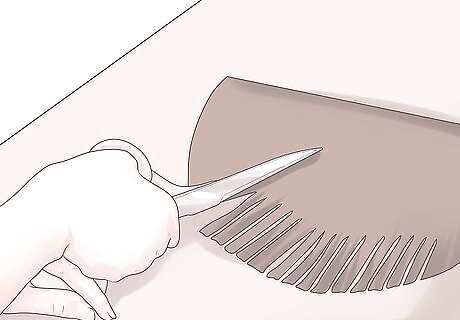
Create fringe for the costume. Make 1.5-inch (3.8-cm) slits along both armholes to create fringe. For the best results, space the slits about 1/2-inch (1.25-cm) apart. Continue around both armholes so that the fringe goes all the way around. You can also glue small strips of store-bought fringe around the arm holes.
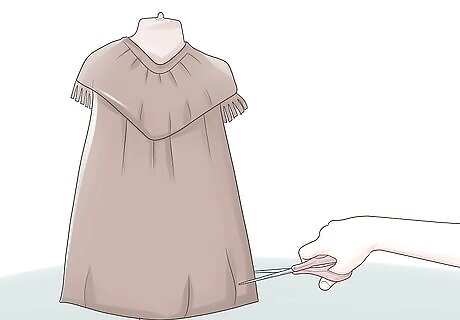
Trim the costume, if necessary. A pillowcase tunic should be short enough to fit older kids and adults, but it might be too long for younger children. Have the child try the costume on, so you can decide if it’s the right length. If the pillowcase extends below the mid-calf, trim it with scissors. Otherwise, your child may trip over it.
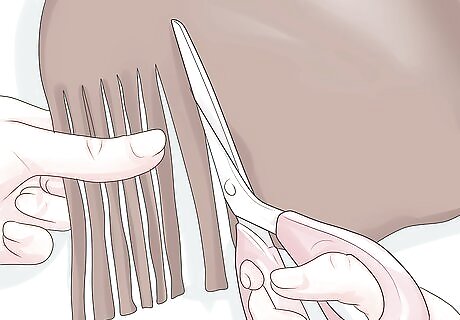
Create fringe along the bottom. Make 3-inch (7.5-cm) slits along the entire open bottom of the pillowcase to create fringe. It helps to lay the pillowcase flat rather than to hold it as you cut. Make sure to use sharp scissors, and space the slits about 1/2-inch (1.25-cm) apart. Be sure to make slits around the entire open bottom of the pillowcase so the fringe spans the entire hem of the tunic.
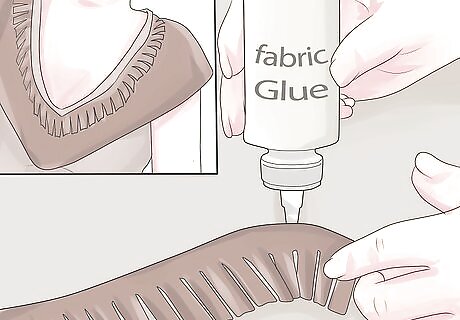
Attach fringe to the neckline. Use fabric glue to attach store-bought or homemade fringe around the neckline.You can make your own fringe by using a 2-inch (5-cm) wide strip of extra pillowcase fabric or brown felt. Cut the store-bought fringe or homemade strip into a half-moon shape the same length as the neckline. For homemade fringe, cut 1.5-inch (3.8-cm) slits along the length of the strip, spacing them 1/2-inch (1.25-cm) apart from one another. Attach the fringe by applying the fabric glue to the non-fringed portion of the fabric strip. The fringes should face down and away from the neck rather than up and over it.
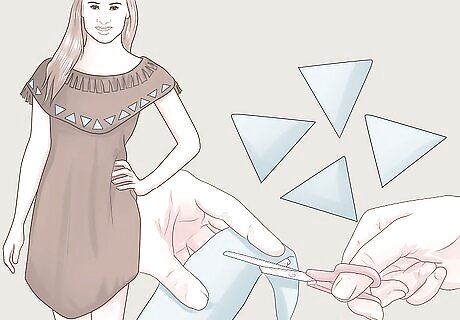
Decorate as desired. One of the simplest ways to decorate the tunic is with colorful triangles along the open base. Cut some craft sponges into 2-inch (5-cm) tall triangles, leaving the edges fairly rough or jagged. Dip the triangles into fabric paint in shades such as red, orange, yellow, and green, and apply it to the tunic in a pattern of your choosing. For a simple look, decorate the open bottom of the pillowcase with a row of upside-down triangles. Place the row about 4 inches (10 cm) from the open end, and space the triangles about 1-inch (2.5 cm) apart from one another. Give your tunic more color by adding a row of right-side-up triangles above your first row of upside-down triangles. Use a second triangle-shaped sponge and a different paint color. Make sure to position each right-side-up triangle between two upside-down triangles. Whatever pattern you choose, repeat it on both sides of the pillowcase. Be sure that the first side is dry before decorating the second, though.
Making Native American Indian Pants

Find an old pair of tan khaki pants. For best results, choose a pair that is roughly the same shade as the pillowcase used for the tunic. The pants should be fairly tight rather than baggy. Semi-baggy pants will work as long as they fit, but pants that are just wide enough to slip on and off are ideal. If desired, you can slim the pants by having the intended wearer try them on and pinning along the sides to desired tightness. Turn the pants inside out and sew along the pin-line. Finally, cut off the excess material and turn the pants right-side-out again.
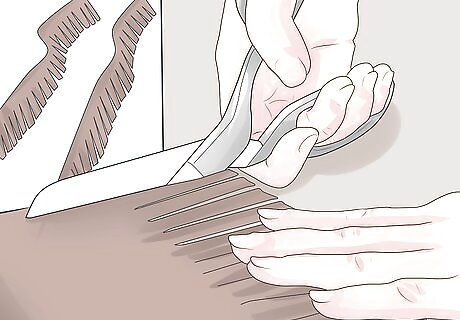
Create fringe for the sides. Cut two long strips of canvas, felt, or another strong fabric in a shade that matches the pants as closely as possible. The strips should be long enough to extend from the waist to the hem of the pants along the sides. To create the fringe, cut 1-inch (2.5-cm) slits along one side of the strip. Space the slits approximately a 1/2-inch (1.25-cm) apart. The strips should be about 1.5 inches (3.8-cm) wide. If you’re short on time, you can also use store-bought fringe.
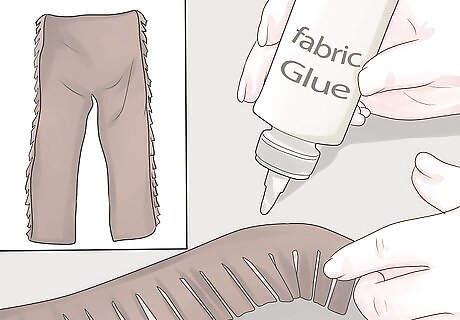
Attach the fringe to the pants. Use fabric glue or a needle and thread to attach the strips of fringe to the sides of both pant legs. If you want to make sure that the pants can be worn multiple times, it’s best to sew on the fringe. Glue or sew along the 1/2-inch (1.25-cm) wide section of the band that does not have fringe on it, and apply it over the side seam on each pants leg. If you prefer to wear a skirt with your costume, add the fringe all along the hem of a brown or tan skirt instead.
Accessorizing a Native American Indian Costume
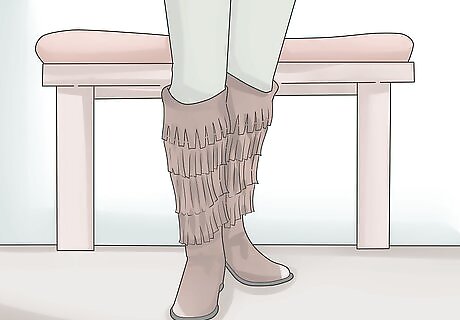
Wear brown flats or boots. Moccasins are the best option, but a simple flat, brown slip-on shoe would coordinate with the look. Basic brown suede boots would also work as long as they have a flat sole. Fur-lined or fringed boots can add some flair to your costume. If you do not expect to walk through mud puddles, you can also wear moccasin-style slippers. Simple brown sandals could also work as long as they are not embellished with other decorations.
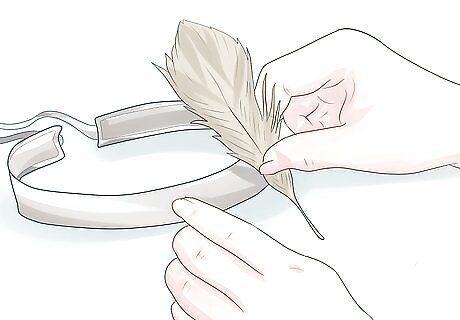
Create a feather headband. Start with a brown cloth headband that wraps around the head rather than over it. Use a hot glue gun to attach one to three feathers to the inside of the headband. Position them so they are at the side of the head and behind the ear. If you cannot find a brown wrap-around headband, cut a strip of stretchy brown fabric that is long enough to fit around the wearer's head and add an extra 1-inch (2.5-cm) to the length. Loop the strip of fabric around to create a band, using fabric glue or hot glue to secure the extra 1-inch (2.5-cm) of fabric over the other end of the band. If you want to give your headband extra flair, decorate it with wooden beads, colorful seed beads, or craft paint.

Add a belt, if desired. If you want to add a little extra shape to your tunic, tie a braided leather sash around the wearer's waist. If you can’t find a sash or belt without a buckle, cut a strip of brown leather, canvas, or brown rope that is long enough to wrap around the waist. Make sure to cut enough extra material so you can tie the belt into a loose bow at the front of the costume. A fringed leather belt can add an attractive touch to your costume too.
Making a South Asian Indian Costume
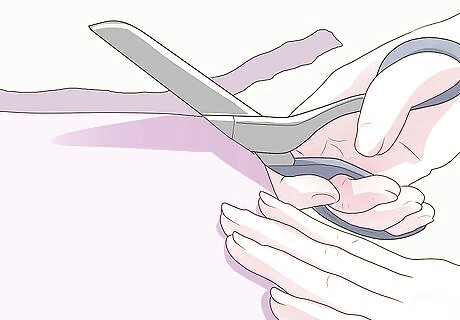
Create a shirt to wear under the sari. Cut out the neckband from the a basic white or other light colored tee shirt with sharp scissors. You should also trim the tee, so it ends at the wearer’s waist. If you want the shirt to stand out, use gem glue to add decorative craft gems to the neckline and bottom hem of the tee.
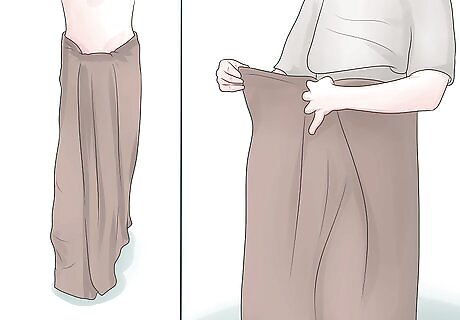
Find a piece of fabric for the sari. A sari is a type of traditional, draping cloth worn by Indian women, but you can create your own with a piece of fabric. Inexpensive acetate that’s usually used for lining garments works well to make your own sari. For a child’s costume, cut the fabric so it's 30-inches wide and 3-yards long. For adults, go with fabric that’s 45 inches wide and 6 yards long. Choose a bold color for your fabric. Jewel tones, such as emerald, ruby, or sapphire, are attractive shade options for a sari.
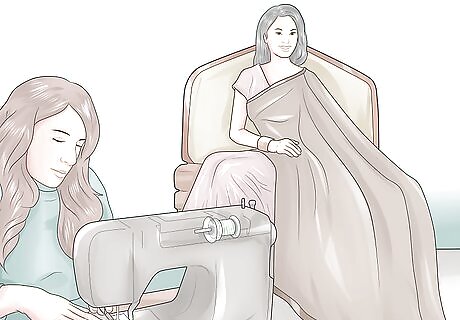
Wrap the sari. To make it easier to wrap the sari, wear your cropped top with a pair of leggings or stretchy bike shorts in a neutral color. Take one end of the fabric and tuck it into the back of your leggings. Create a pleat in the fabric, and tuck the next section into the waistband, repeating the action all the way around your waist. Drape the excess fabric over your shoulder, folding from the back to the front. When you tuck the fabric into your waistband, the hem should cover your feet but rest above the floor. Aim for approximately 7 to 10 pleats when you’re tucking in the fabric. The pleats should fall straight and point to your left. When you drape the remaining length of fabric over you, it should be somewhere between knee-length and floor-length. If you’re worried about your sari coming loose, secure it in place with pins. Compliment your sari with gold or silver bangle bracelets, gold or silver hoop earrings, and flat sandals.


















Comments
0 comment